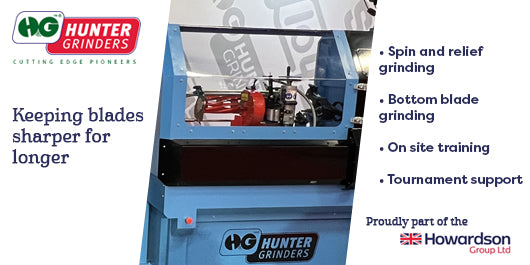Northampton Saints overhaul pitch
Saints overhaul pitch

The existing pitch here at Franklin's Gardens had performed very well until recently. For the last 12 years I have been sand dressing and power harrowing the pitch at the end of the season, adding around 1200 tonnes of specified drainage sand and there is no doubt that the surface has
More recently, with the construction of the new stands, there have been pitch problems due largely to damage to the pipe drains preventing water from getting away from the surface.
The stadium is used by Northampton Saints, but is also used for youth and England training sessions and player development. We now have installed a superb state-of-the-art CCTV system that records performance of individual players. This player-cam system allows coaches and players to assess and improve their play. With the additional use on the pitch, 

The existing pitch has served its purpose well, but there were issues with levels, and the fact that we did not have an integral irrigation system. We do of course have a purpose-built lake behind the South Stand that we have used for irrigation in the past, and we wanted to incorporate its use for both drainage and irrigation. In other words, we now have a self-contained manageable water system.
I have usually undertaken the pitch renovations and constructions myself, but I felt that a project like this needed some expert opinion. I called on a number of contractors, but was very impressed with the professionalism and knowledge displayed by Pugh-Lewis and Premier Pitches and they were awarded the contract.


The next stage was to cultivate the pitch surface with a stone-burier to incorporate any remaining organic build up producing a homogenous root zone to a depth of 150mm. With a loosened surface, a laser-controlled blade grader was used to create a longitudinal fall of one in 100 and a graded level surface. During the grading we found a couple of problem areas that were very low, so we added about 80 tonnes of medium-fine sand to these areas and ameliorated this sand into the top 110mm to finished levels.
With the general levels on the pitch completed, the next major job was to start on a new drainage scheme. An outfall chamber was installed in the corner of the pitch using 150mm diameter pre-castconcrete rings to a depth of 1450mm. This provided a reasonable capacity of holding water prior to 
The 125mm perforated pipe main drains were then laid along the west and south stands and
As this work was continuing we had the new irrigation system installed. This comprised of a 63mm ring main with 12 perimeter Toro pop-up sprinklers and three portable sprinklers fed from pitch side hydrants for the centre. A submersible pump was installed in the lake with a control panel sited in the adjacent stand. This meant that we had one pump in the lake to feed the irrigation, and we had one pump in the outfall chamber of the drainage to fill the lake, this submersible pump is capable of pumping 10 litres per second into the lake. Again this pump is controlled via a control panel located next to the irrigation controller.
With the irrigation installed and the main and lateral drains completed, the slit drainage was started, and this involved installing 50mm wide drains at 1.0m centres from north to south over the entire drained area. Again these were backfilled with 6mm pea gravel to within 150mm of the final surface. The last 150mm was topped up with suitable coarse sand. The reasons for this will become apparent by the end of my article. With the gravel/sand slits in, the lads then used laser-grading equipment to do their final grading works to restore true levels prior to the fibreincorporation.

We chose to use the Mansfield concentrated Fibresand product and this was supplied and spread in two passes to a depth of 22.5mm. Once spread it was incorporated into the Rootzone, distributed evenly through the top 100mm, creating a root zone with a fibre content of 0.21% - 0.24% by weight. The total amount of fibre concentrate was approximately 315 tonnes. As I said before the slit drains were backfilled with gravel to within 150mm of the surface, followed by suitable sand to the surface. This ensured that, following fibrecultivation, no gravel was brought back to the surface and a 50mm blinding layer remained over the gravel.


We are now applying 400kgs of a seaweed soil conditioner just prior to seeding, which hopefully will be completed this afternoon (Friday 27th June). We will be sowing a mixture of top-rated ryegrass. The seed will be sown in two directions using a Blec Turfmaster sports field seed drill. In total we will put down 16 bags or 400kg.
Then it will be fingers crossed for some rain, sunshine and a quick establishment of the pitch. The only other works outstanding will be the re-instatement of the goal posts, but we will wait until the grass is growing well before these are installed.



